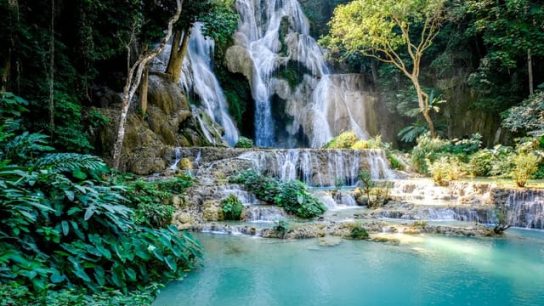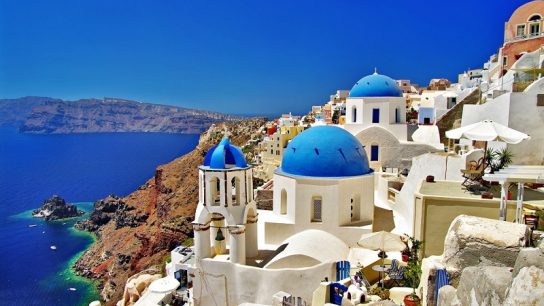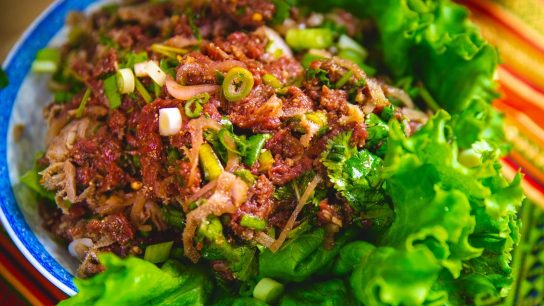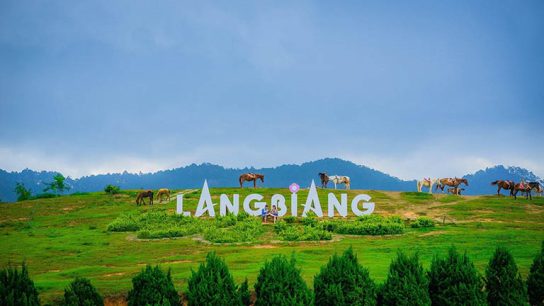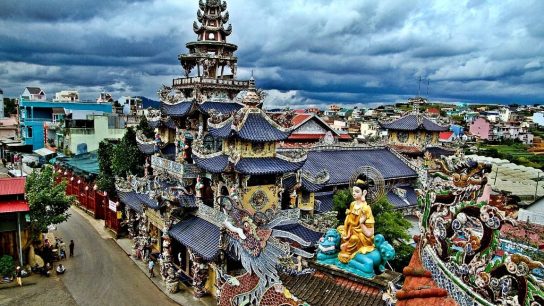Hanoi, steeped in a millennium of culture, boasts dozens of temples. Yet, when it comes to the most renowned, Ngoc Son Temple inevitably comes to mind. Perched on Jade Island amidst the heart of Hoan Kiem Lake, Ngoc Son Temple is celebrated for its unique architecture and striking, serene beauty. This article will delve deeper into this historical complex and share valuable insights to ensure your journey is complete and perfect.

The history of Ngoc Son Temple
- Location: Ngoc Island, Hoan Kiem Lake, Dinh Tien Hoang Street, Hang Trong Ward, Hoan Kiem District, Hanoi
Nestled on a small islet in the northeastern corner of Hoan Kiem Lake, Ngoc Son Temple stands as an iconic symbol of spiritual and cultural significance in the heart of Hanoi. With a history dating back to the 19th century, the temple has witnessed numerous transformations, closely intertwined with the rich tapestry of Vietnam’s history.
Originally constructed to honor Quan Cong, a revered deity believed to bring prosperity and protection to the people, the temple was initially named Ngoc Tuong. However, during the Tran Dynasty, it was renamed Ngoc Son, signifying its association with the military commanders who sacrificed their lives in the struggle against the invading forces of the Yuan-Mongol army.

Over the centuries, Ngoc Son Temple has undergone several renovations and expansions, each contributing to its unique architectural charm and historical significance. From the Trung Dynasty’s Khanh Thuy Palace to the philanthropist Tín Trai’s construction of Chua Ngoc Son, the temple has evolved into a multifaceted symbol of spiritual devotion and national pride.
Despite facing periods of destruction and rebuilding, Ngoc Son Temple has stood the test of time, embodying Hanoi’s spiritual and cultural essence. In 2013, Ngoc Son Temple was recognized as a special national heritage site, further cementing its status as a must-visit destination for both locals and tourists alike.
The best time and ticket price to visit Ngoc Son Temple
Visitors to Ngoc Son Temple are greeted with a serene ambiance and a glimpse into Hanoi’s vibrant cultural heritage. While the temple welcomes guests year-round, the beginning of the lunar new year holds a special allure, as locals flock to offer prayers for health, prosperity, and success in the coming year.

Ngoc Son Temple opens its doors to visitors every day of the week, with extended hours on weekends to accommodate the influx of tourists. Ticket prices vary based on age and status, with:
- Free admission for children under 15
- Discounted rates for students upon presentation of a valid student ID: 15,000 VND/person
- Standard fees for adults: 30,000 VND/per person
How to get to Ngoc Son Temple
To reach Ngoc Son Temple, visitors have several transportation options available to them, each offering its own advantages and considerations.
By Bus
Ngoc Son Temple’s central location in Hanoi makes it easily accessible by public bus, offering a cost-effective means of transportation. Visitors can choose from four bus routes:
- Route 08: Departing from Long Bien Bus Station.
- Route 14: Departing from Co Nhue.
- Route 31: Departing from Bach Khoa University.
- Route 36: Departing from Long Bien Transfer Station.
By Motorbike or Car
Motorbikes and cars are popular choices for many tourists due to their convenience and flexibility. There are three main routes for motorbike and car travel to Ngoc Son Temple:
- Route 1: From Giang Vo → Nguyen Thai Hoc → Hai Ba Trung → Dinh Tien Hoang.
- Route 2: From Dai Co Viet → Pho Hue → Dinh Tien Hoang.
- Route 3: From Kham Thien → Tran Hung Dao → Hang Bai → Dinh Tien Hoang.
Note: Hanoi’s pedestrian streets are closed to vehicles during the weekends, so visitors planning to visit Ngoc Son Temple during this time should plan accordingly.
What is Special about Ngoc Son Temple?
Ngoc Son Temple, nestled on the tranquil island of Hoan Kiem Lake, is not only a place of worship but also a treasure trove of historical and architectural wonders. Let’s delve into some of the remarkable features that make Ngoc Son Temple a must-visit destination in Hanoi.
The Tower of the Pen and the Moon – The Shrine of Writings

One of the most iconic structures within Ngoc Son Temple is the Tower of the Pen and the Moon, also known as the Shrine of Writings. This elegant tower stands proudly at the entrance, serving as a symbol of literary achievement and enlightenment.
Constructed from sturdy stone, the Tower of the Pen and the Moon rises to a height of 9 meters, symbolizing a solitary mountain peak amidst the tranquil waters of the lake. Adorned with intricate carvings and inscriptions, the tower exudes an aura of wisdom and scholarly pursuit.
Inside the tower, visitors can marvel at the majestic calligraphy and historical artifacts on display, including ancient manuscripts and scrolls penned by revered scholars of the past. The tranquil ambiance of the shrine invites contemplation and reflection, making it a serene retreat for seekers of knowledge and inspiration.
The Sacred Turtle Steles of Hoan Kiem Lake
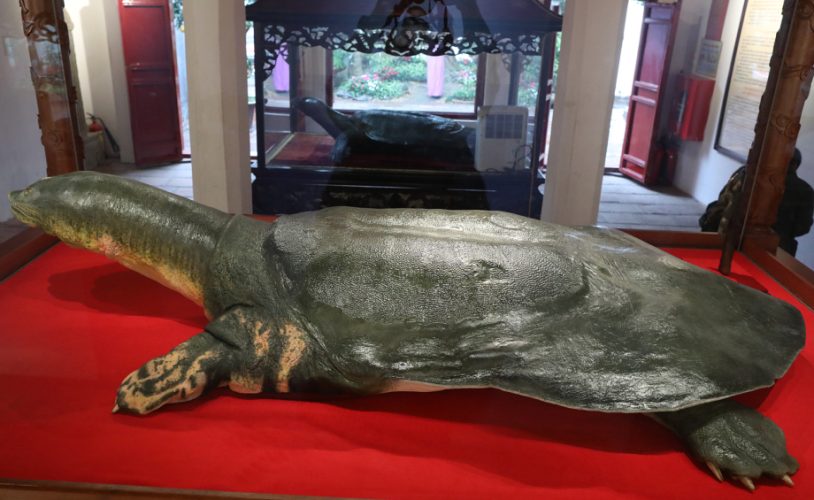
No visit to Ngoc Son Temple would be complete without paying homage to the revered Turtle Steles of Hoan Kiem Lake. These ancient stone tablets, known as “tieu ban,” commemorate the legendary sacred turtles that once inhabited the waters of the lake.
The most famous of these steles is the monumental Turtle Stele, which commemorates the mythical turtle deity that is said to have bestowed a magical sword upon Emperor Le Loi, enabling him to defeat the Ming invaders and reclaim Vietnam’s independence in the 15th century.
The Huc Bridge – The Rising Sun Bridge
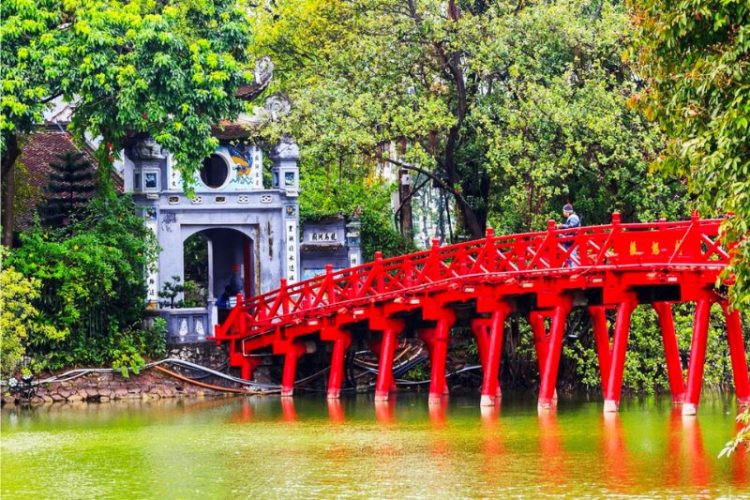
Spanning gracefully over the shimmering waters of Hoan Kiem Lake, the Huc Bridge, or the Rising Sun Bridge, serves as the gateway to Ngoc Son Temple. Renowned for its vibrant red hue and elegant curvature, this picturesque bridge is steeped in symbolism and legend.
The name “Huc” translates to “the place where sunlight hits early in the morning,” reflecting the bridge’s association with the rising sun and the dawn of a new day. According to folklore, crossing the bridge is believed to bring good fortune and blessings, making it a popular spot for visitors seeking auspicious beginnings and positive energy.
Ngoc Son Temple – A Sanctuary of Spiritual Tranquility
At the heart of Ngoc Son Temple lies the main sanctuary, a sacred space dedicated to honoring revered deities and ancestral spirits. Steeped in centuries of tradition and devotion, the temple exudes an aura of spiritual tranquility and reverence.
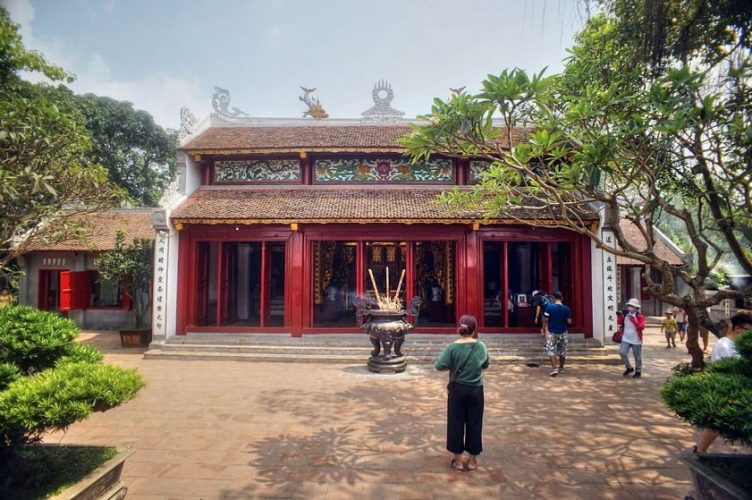
The architecture of Ngoc Son Temple reflects a harmonious blend of Confucian, Taoist, and Buddhist influences, embodying the principles of unity and diversity that are intrinsic to Vietnamese culture. From the ornate altars adorned with intricate carvings to the fragrant incense wafting through the air, every aspect of the temple resonates with a sense of sacredness and devotion.
Visitors can partake in traditional rituals and ceremonies, such as offering prayers and burning incense, to pay homage to the deities and seek blessings for prosperity and well-being.
What to Do around Ngoc Son Temple?
While exploring Ngoc Son Temple and its surroundings, visitors can immerse themselves in the vibrant cultural tapestry of Hanoi through various nearby attractions and activities. Here are two highlights:
Hoan Kiem Walking Street

Located adjacent to Hoan Kiem Lake, Hoan Kiem Walking Street is a bustling pedestrian promenade teeming with energy and excitement. Lined with charming cafes, street vendors, and souvenir stalls, this vibrant thoroughfare offers a delightful glimpse into the daily life and bustling commerce of Hanoi.
Visitors can stroll along the promenade, soaking in the lively atmosphere and sampling delectable street food offerings such as banh mi, pho, and freshly brewed Vietnamese coffee. Street performers and artisans often showcase their talents, adding to the festive ambiance and creating memorable experiences for visitors of all ages.
Thang Long Water Puppet Theater
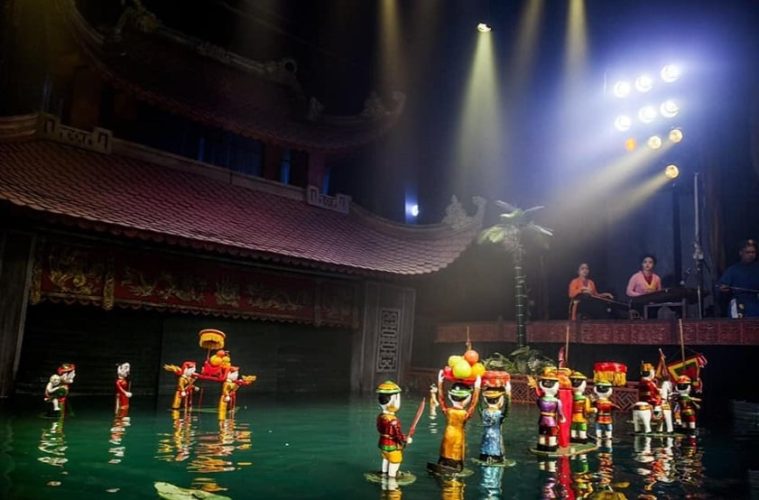
For a unique cultural experience, visitors can attend a traditional water puppet show at the renowned Thang Long Water Puppet Theater. Dating back to the 11th century, water puppetry is a cherished art form in Vietnam, depicting scenes from rural life, folklore, and mythology through intricately crafted wooden puppets.
Located just a short walk from Ngoc Son Temple, the Thang Long Water Puppet Theater offers captivating performances accompanied by live traditional music and colorful lighting effects. Audiences of all ages are mesmerized as the puppets dance and glide gracefully across the water, bringing ancient tales to life in a mesmerizing display of artistry and skill.
Tips for Visiting Ngoc Son Temple
When planning a visit to Ngoc Son Temple, it’s essential to keep a few important tips in mind to ensure a smooth and enjoyable experience:
- Appropriate Attire: Visitors should dress modestly and respectfully when visiting Ngoc Son Temple. Avoid wearing revealing clothing or attire that may be considered inappropriate for a place of worship.
- Quiet and Respectful Behavior: As Ngoc Son Temple is a place of worship, visitors should maintain a quiet and respectful demeanor during their visit. Avoid loud conversations, and be mindful of other worshippers who may be engaged in prayer or meditation.
- Follow Cultural Customs: When entering the main temple area, it’s customary to enter through the side doors rather than the central entrance. Remove hats and sunglasses before entering the temple, and refrain from chewing gum or smoking while inside.
- Photography Etiquette: While photography is allowed in certain areas of Ngoc Son Temple, be respectful of worshippers and avoid taking photos in areas designated for prayer or meditation. Always ask for permission before photographing individuals, and be mindful of cultural sensitivities.
- Watch Your Step: The temple grounds may include uneven surfaces, steps, and thresholds. Exercise caution and watch your step to avoid tripping or falling, especially in dimly lit areas or during inclement weather.
- Respect Religious Artifacts: Ngoc Son Temple houses precious religious artifacts and cultural treasures. Refrain from touching or tampering with any items on display, and be mindful of maintaining the integrity of the temple’s sacred objects.
- Visit During Off-Peak Hours: To avoid crowds and enjoy a more serene experience, consider visiting Ngoc Son Temple during off-peak hours or on weekdays. Mornings and early afternoons tend to be quieter than evenings and weekends.
Visiting Ngoc Son Temple offers a serene escape from the bustling urban landscape, allowing you to immerse yourself in its tranquil ambiance and marvel at the capital’s ancient architectural masterpiece.
This article aims to provide you with comprehensive information for your upcoming journey to Ngoc Son Temple. If you find this destination worthy of exploration, don’t hesitate to bookmark this article in your travel guidebook and share it with others!
Explore Ho Quoc Pagoda, The most Sacred and Tranquil Pagoda in Phu Quoc.
Sun World Ha Long Park Quang Ninh: A Premier Destination for Entertainment Seekers

